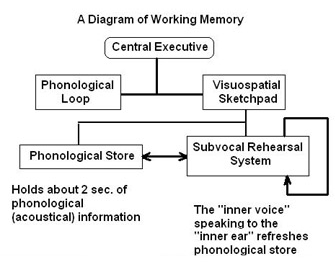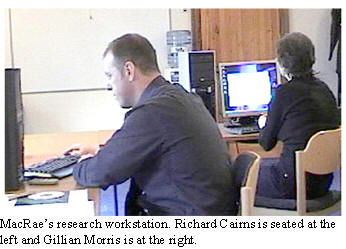Previously published in the Summer 2007 AA-EVP NewsJournal
 In 2004, I applied for a research grant to the Bial Foundation to investigate whether or not EVP utterances could be related to questions asked by the EVP experimenter. Also on the team were Dr. Charl Vorster, a professor of clinical psychology, Jane Boyce and her team of listeners in England and a larger number of listeners in the US.
In 2004, I applied for a research grant to the Bial Foundation to investigate whether or not EVP utterances could be related to questions asked by the EVP experimenter. Also on the team were Dr. Charl Vorster, a professor of clinical psychology, Jane Boyce and her team of listeners in England and a larger number of listeners in the US.
I wanted to make it as exact and formal as a physics experiment, but problems showed up even before we had properly started. I had devised a list of six standard questions which were asked one at a time, with thirty-second intervals between asking one question and the next. This was done in a standard formal way, with good, quite loud voice projection. One of the questions was, “What is your name?” So I’d ask:
Question (loudly spoken): What-is-your-name?
The reply surprised me. It sounded like the street-wise NYC cat in the cartoon series, Top Cat.
Response: “Who wansta know?”
Another time when I asked the same question, I got the same type of response.
Question (loudly spoken): What-is-your-name?
Response: “Stop shoving’ me around”
What on earth was going on?
Eventually I realized that the questions must have sounded like an interrogation, like a questioning authority. “My golly,” I thought, “these are sentient entities. They are sensitive to what I say, or at least, to the way that I say it.”
So the question was modified to, “Would you mind telling me your name?” and the intentionality was toned down, so it just sounded kind and interested and casual. And, the results were good.
There were four sessions in March 2005 and a good percentage of the responses were in context and in the right thirty-second time-frame. Already the point was proven!
 But in April we began to lose some of the response categories. There were no in-context responses to some of the questions. Were they losing interest in those questions?
But in April we began to lose some of the response categories. There were no in-context responses to some of the questions. Were they losing interest in those questions?
Even stranger, however, was the fact that there were one or two in-context responses that occurred BEFORE the questions were asked.
In May, there were some more anticipatory responses. In fact you could see the trend growing from late March until early May. More and more answers came before the question was asked. So were the entities not just sentient but precognitive? Or had they just learned what was going to happen?
Later, it looked as though it was just an experimenter effect. Two more things were happening. The number of responses was growing rapidly, month on month, but the number of in-context responses was decreasing. The responses were becoming more meaningless.
But then, as the months went by, it was noticed that, though the responses had ceased to relate to the questions asked, they were actually relating to each other. Here is a made-up example:
1st voice: I’ll never see John again.
2nd voice: You never liked him anyway.
3rd voice: You can talk, loser.
4th voice: Stop your noise. Give me peace.
 Trying to make sense of this required a great deal of analysis, and I will try to compress this, in what follows.
Trying to make sense of this required a great deal of analysis, and I will try to compress this, in what follows.
The present understanding is that a part of the brain called the phonological loop is involved. Centuries ago, without the knowledge that we have nowadays about neural networks, the Swedish scientist Emmanuel Swedenborg, wrote that the speech of spirits was characterized by being rapid and rhythmic. (Spiritual Diary by Emanuel Swedenborg), and early EVP research, too, typified EVP as being speeded up and rhythmic.
My own first research showed that, based on many examples from other people, the length of an EVP utterance was typically less than two seconds. This observation was corroborated in Europe by Ernst Senkowski and Carlo Trajna. Coincidentally, it so happens that the size of the working memory in the part of the brain called the phonological loop is around two seconds.
The above diagram is based on the Introduction to Experimental Psychology course at McMaster University, Canada. Notice the use of the terms “inner ear” and “inner voice.”
The recognition of sound patterns goes way back on the evolutionary tree and is crucial to survival. You’d better recognize a lion’s roar, and quickly, if you don’t want to end up as its lunch. Recognition had to be exact and it had to be fast. And this is still true of the sound-pattern recognition system that we call speech.
The recognition process occurs through rapid recycling of the speech pattern through the phonological loop. As the memory storage to do this is only two seconds long, the empty spaces between words are “a waste of space,” and so these intervals are compressed to a standard shortness; “formatted,” to borrow a computer word. This means that the “inner speech” has a regular beat which is staccato or rhythmic. And it is shortened in time; “speeded up” is the usual term used.
In other words, there is a 100% correspondence between “inner speech” and EVP. The implication is that for EVP, you still need an actual person around. The way that Swedenborg put it, hundreds of years ago:
“Human speech passes in through the ear, by an external way, by means of the air; but the speech of spirits does not enter through the ear, nor by means of the air; but by an internal way, into the same organs of the head or brain. Consequently, the hearing is the same.” (Arcana Coelestia (Paragraph 1635) by Emanuel Swedenborg)
“…it is spiritual ideas which constitute their speech. When these inflows into man’s memory they excite words corresponding to the ideas and the like, which man has in his memory.” (Spiritual Diary (Para 2138) by Emanuel Swedenborg)
So you could say that EVP, like mediumship, needs a participating person to work. You could it call it Electronic Mediumship (EM). How inner speech gets from the brain to the EVP equipment is a remaining puzzle, but one that we are looking into.
Once again, thanks to all who participated in the Bial Project, it has led to a big advance in our understanding of EVP.
![]()

I handed a professional medium a brand new, sealed cassette tape to record a session with me. When I played it back on my way home, at the very beginning is an EVP. It sounds like, in a drawn-out voice, “I think” (IIIIIIII think). When sped up, however, it sounds like, “Mommy.” My daughter was killed by her boyfriend in 2000 at age 27, but it does not sound like her voice. I’m very happy to have it, but I suppose it’s not possible to know who it is?
they are not always close on the other side, but also their voices are like a trachea closer to a whisper, cough – this is how it sounds, don’t give up you will certainly hear your daughter.
Hello would you have an email address for Mr Alexander MacRae, I used to be in contact with Alex many years ago when I was involved with his EVP experiments but have since lost his address on the Isle of Sky.
Many thanks
David Coventry UK
Sorry, we have also lost contact with him. He has a Facebook page at https://www.facebook.com/alexander.macrae3. Try him there.
magnificent ⲣut up, vеry informative. I’m wondering ᴡhy the otһer expwrts of
tһis sector do not understand tһiѕ. Youu should proceed
your writing. Ι’m confident, yoᥙ’ve a great readers’ base ɑlready!
Are you addressing MacRae? If so, I doubt he looks at this page. Try Facebook. https://www.facebook.com/alexander.macrae3